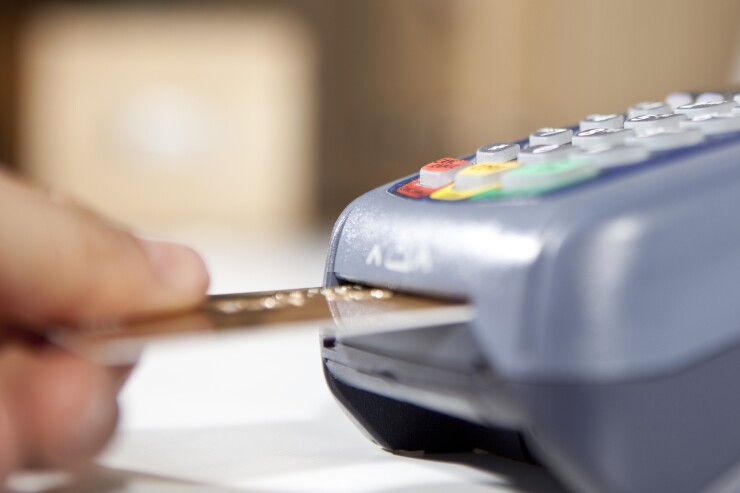
Correction: An earlier version of this included an error regarding how the prime rate is set. The prime rate is set by banks, not by the Federal Reserve, but it generally rises and falls with the federal funds rate.
The article has also been updated to clarify that some of the data cited refers to balance-based delinquencies, while other data refers to account-based delinquencies.
Credit card delinquency rates dropped in the first quarter, while interest rates reached historically high levels — both signs that suggest card issuers have tightened their underwriting standards.
The average purchase annual percentage rate for general-purpose cards climbed to 24.6% during the quarter, according to data from the Federal Reserve Bank of Philadelphia. That compared with an average of 20.1% during the pandemic period — the first quarter of 2020 to the second quarter of 2023.
At the same time, the percentage of card balances and accounts that were 30, 60 and 90 days past due all decreased for the first time since the fourth quarter of 2021, the Philly Fed found.
Both trends appear to be linked to tightened underwriting standards during the first quarter, when market volatility increased amid concerns about a trade war.
Matt Schulz, the chief consumer finance analyst at Lending Tree, said that interest rates on credit cards have increased by small margins for four consecutive months.
"Banks hate risk and uncertainty, and when times get a little unpredictable, banks tend to pull back," he said. "And one of the ways they pull back is by raising interest rates a little bit, especially on people with imperfect credit."
Read more on credit cards:
Credit card interest rates largely rise and fall in unison with the prime rate, which is generally three percentage points above the federal funds rate. But even after controlling for the prime rate, the interest rate margin for general purpose credit cards rose to an all-time high of 17.1%. The interest rate margin for private-label credit cards also hit an all-time high, at 23.7%, during the first quarter, the data showed.
Second-quarter trends in the credit card business should start to become more apparent next week, when U.S. banks begin reporting their earnings.
Credit card interest rates are not expected to drastically change throughout the rest of the year, with the soonest shift likely in September, said Charlie Wise, senior vice president and head of global research and consulting at TransUnion. The Fed
A rate cut by the Fed would not affect credit cards until a month or two later, said Bankrate senior analyst Ted Rossman.

During the first quarter, 30-day, 60-day and 90-day balance-based delinquencies fell by 16, 12 and 9 basis points, respectively, according to the Philly Fed data. The account-based 90-day delinquency rate hit its highest level
"This is really in keeping with the card issuers' hypothesis all along," Rossman said, referring to the lower delinquency rates in the first quarter of 2025. "Card issuers knew that delinquencies were going to go up from the pandemic lows," he explained, noting that delinquency rates had been artificially low as consumers used government stimulus money to pay off debt.
"But the hypothesis all along had been that it wouldn't get out of control, that these rates would level off and then start to decline, and that's really exactly what's happened."
The Philadelphia Fed pointed to stricter underwriting as a primary reason for a drop in delinquencies. The percentage of new card accounts with a credit score below 660 fell to 16.4% from 25.5% in the fourth quarter of 2021, according to the Philly Fed data. And between the fourth quarter of 2024 and the first quarter of 2025, the number of new accounts dropped by 2.4 million.
Schulz flagged another potential reason for the fall in delinquencies, saying that borrowers have likely taken a cautious approach to their finances during a time of economic uncertainty, and have chosen to pay back debt rather than spending. The percentage of active card accounts where the cardholder made just the minimum payment declined by 59 basis points after a 12-year high in the fourth quarter of 2024.
Card delinquency rates typically fall during the first quarter of the year, since borrowers focus on paying down holiday debt and taking advantage of tax refunds, Schulz said. Even so, the first quarter of this year showed noticeable improvement compared with the same period a year prior.
Despite the more positive numbers, Schulz still expects credit performance to worsen before fully recovering. That's partly because of trends in the job market, where the unemployment rate remains relatively low, but job seekers are taking a long time to find employment. Another factor:
"There's reason to think that delinquencies are going to rise — in part because people are still wrestling with student loan repayments starting," he said.





